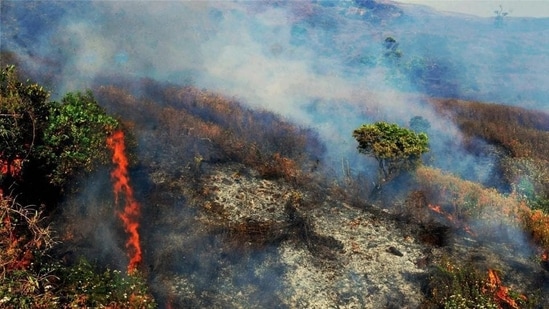Synergy and collaboration are key drivers in fighting forest fires and heatwaves
Long-term community engagement, incentive mechanisms, and shared ownership can be a silver bullet in the management of forest fires.
The regional fact sheet (Asia) of the sixth Assessment Report (AR6) of the Intergovernmental Panel on Climate Change (IPCC) with a high degree of confidence projects an increase in heatwaves in the future. Delhi has already recorded the highest temperature in the first half of April since 1950. The India Meteorological Department (IMD) reported the highest average temperature since 1901 for March and a decline in long-term precipitation by 71%. Parts of India are likely to experience increased droughts and an extension of the forest fire season.

For the Himalayan region, heat stress and prolonged droughts will trigger a wide range of issues, and one of the most pressing is the struggle to mitigate forest fire events. In all likelihood, dry conditions and heatwaves will further exacerbate these.
The Uttarakhand state forest department (UKFD)’s data on forest fires (2000-2020) indicates that approximately 2,400 hectares of forest area gets affected by forest fires annually. Robust satellite-based technologies have been available with the forest department for about a decade-and-a-half, providing real-time accurate information on forest fire incidents.
Yet, forests continue to burn year after year. Technological interventions are useful, only to the extent of tracking a fire incident. The solutions to mitigate fires are missing, which require thinking beyond technology. Topography is a limiting factor, ridges and steep slopes are difficult to reach for immediate action. Yet, cloud seeding and spraying water through choppers are hugely impractical and enormously expensive.
What is more problematic is the false sense of hope conveyed by forest managers, deflecting the state to come up with the right solutions. Public concerns are also limited to the fire season, as the first shower of the monsoon hits the mountains, and the seasonal conservationists disappear until the next fire season arrives. Myths, misconceptions, and misinterpretations about the causes of fires are also a matter of huge concern.
Most popular arguments around forest fires in Uttarakhand are directed toward a tree species, Pinus roxburghii (locally known as chir pine) a native conifer that has dominated the Himalayan slopes for thousands of years, and the rural communities who have time and again displayed their affinity to the forests through historic movements. The 1916 protest against the opening up of forests for commercial exploitation by the British and the Chipko movement of the 1970s when mountain women and men put their bodies between the tree and the axe are among these.
Chir pine is likely to spread further if policies remain unchecked. Although, false notions that Chir pine is the primary cause of forest fires require correction; 99% of forest fires in Uttarakhand are ignited due to human activities. Chir pine forests do not ignite fires on their own, the fault of the species lies in its incredible ability to tolerate fire and thrive post-fire events.
As for communities, evidence suggests that pre-monsoon burning results in a better flush of grass in the coming season. In a fodder-deficit region, it is difficult to maintain livestock, which has been an integral part of rural households for centuries. The struggle for fodder is manifested by the fact that Uttarakhand is perhaps the only region in the world where women still have to climb trees for livestock fodder. Fodder production under the pine canopy has yielded promising results. Such strategies provide fodder for livestock and reduce women’s drudgery.
Stringent forest policies have created a barrier between the communities and the forest department. Poor forest management has assisted the expansion of Chir pine. The predictions made through IPCC’s AR6 and the heatwaves in Delhi give us a fair indication of the future. Practices and policies need to be revised, the future strategy rewritten, and past mistakes corrected.
In Uttarakhand, long-term community engagement, incentive mechanisms, and shared ownership can be a silver bullet in the management of forest fires. The onus of execution lies with the forest department. Otherwise, these forests will continue to burn, possibly at larger intensities in the future.
Vishal Singh is the director, Centre for Ecology Development and Research
The views expressed are personal
Continue reading with HT Premium Subscription




